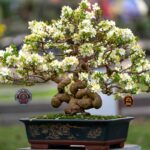Growing a bonsai tree takes time and dedication. Once you have a seed, you’ll need to care for it every day. This process is never-ending and requires that you have an eye for detail. Eventually, you can trim the tree into different styles, creating a unique shape.
Growing a bonsai tree from a seed is an enriching experience.
Even if you and another person get a seed from the same tree, there’s no way they’ll look the same!
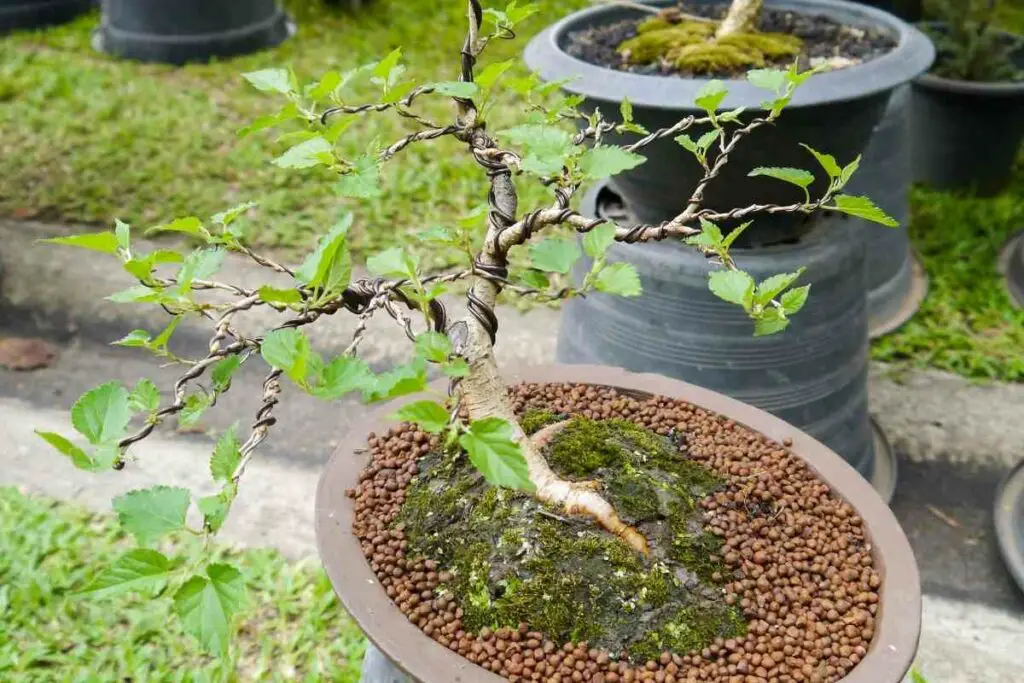
Growing a bonsai also teaches patience, and pruning the branches is relaxing.
You’ll want to start right away.
Table of Contents
How Do I Grow a Bonsai Tree?
When growing a bonsai tree, there are steps that you’ll need to follow.
However, you must consider what type of tree you want to grow first!
Bonsai trees are just regular trees, but you prune them to stay small.
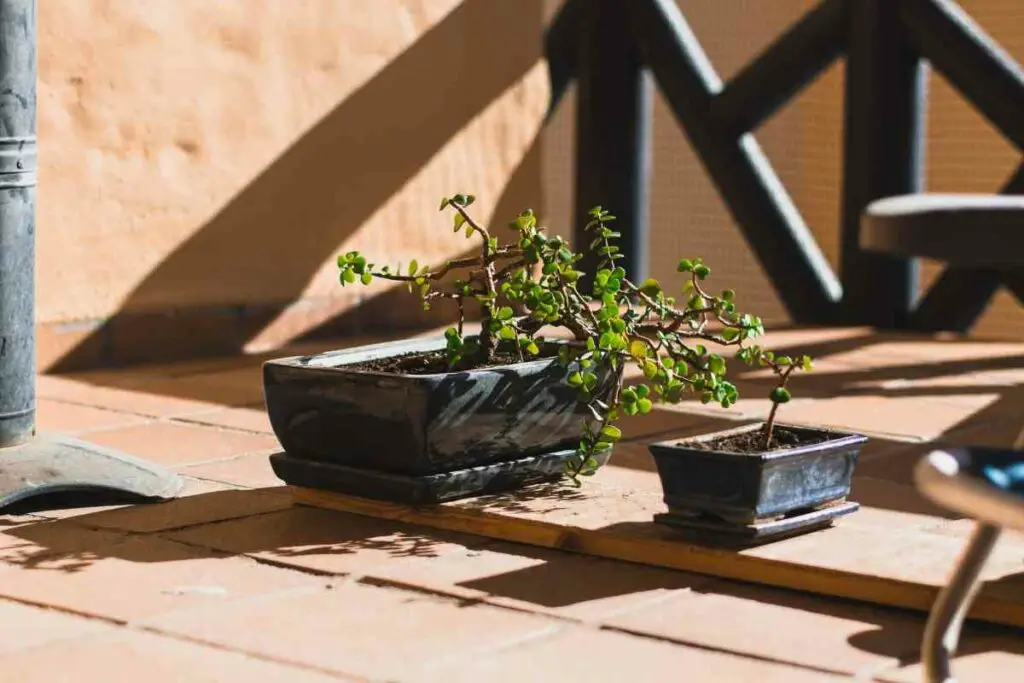
You can use tree seeds you find locally or buy a kit online to get started.
Once you plant the tree seed, you’ll need to check on it daily. If you don’t, you may not notice the condition of the soil.
Overall, growing a bonsai from seed is a very rewarding experience! Here’s what you need to know to get started on your journey:
1. Choose a Tree Seed
When it comes to a bonsai tree, you can choose any tree seeds you want!
You should select one from your local area, so you know that the tree will already be in its optimal climate.
There’s no such thing as a “bonsai tree seed” since the seeds come from regular trees.
If you choose a local tree seed, you’ll want to plant it during autumn for the best result.
However, you can find a variety of seeds online! They should come with instructions that allow you to grow them during your current season.
Some popular seeds that you can find about anywhere include acorns and chestnuts. Pine cones are another option that you might like!
Remember This – Make sure that you choose a seed from a tree that interests you! You’ll be spending a lot of time caring for it and looking at it.
2. Perform Stratification
Stratification is when you treat a tree seed to make it grow.
If the tree seeds aren’t in season or require special growing conditions, you’d do this.
Many tree seeds germinate in early spring, so they won’t grow unless they sense that a cold period has passed.
That means you may need to simulate a cold season at home!
Start by soaking the seed in water, then storing it in your fridge for about two months.
The exact process will depend on the seed that you choose.
However, you can avoid this step by selecting seeds that you find in your local area!
Finally – All you need to do is plant the tree seeds during the spring, after keeping them outside in the cold for a period.
3. Build the Substrate
The substrate is the soil that you’ll use in the planting pot.
You want the very bottom layer to have high drainage abilities- materials like gravel or lava rock work best.
Then, over the bottom layer, you’ll want to pour out an even layer of bonsai soil.
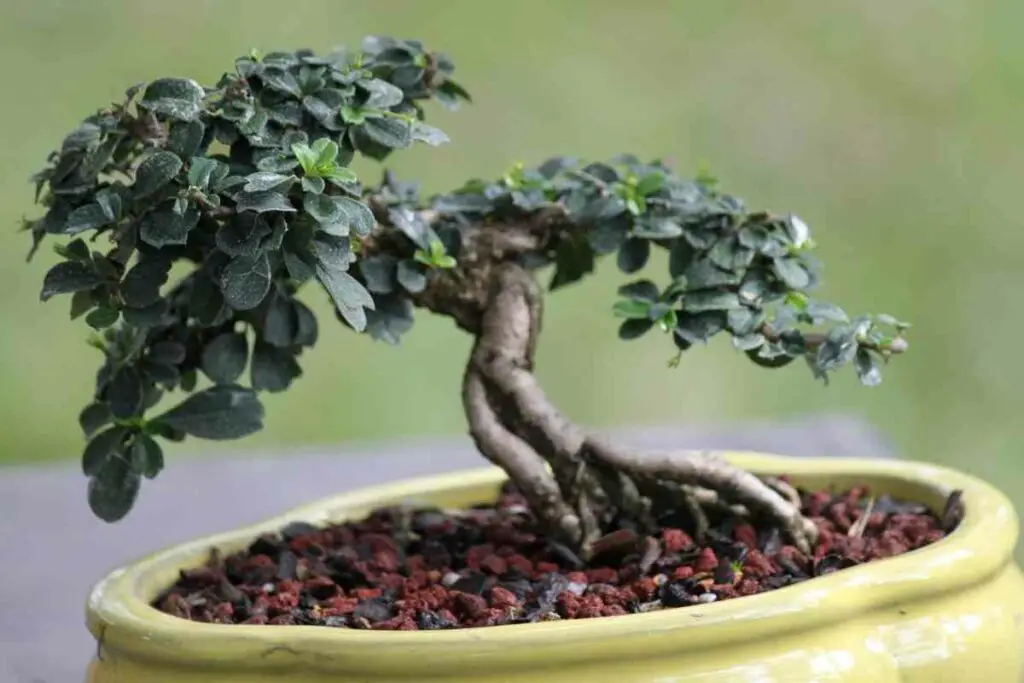
You want the soil to have plenty of nutrients, so many gardeners will use their compost or fertilizer to encourage the tree to grow.
Next, place the seeds on top of the soil, leaving plenty of space between them. Larger seeds require more space!
Then, place another inch of your bonsai soil over the seeds. Press the dirt down with your fingers to lightly compact it, then finish by watering the dirt!
Heads Up! You’ll want to water the soil anytime the top layer of it feels dry now. Make sure that you check it every single day! Depending on where you live, the seeds may require water daily.
4. Repotting the Seeds
You’ll need to let the seeds sprout and grow for at least a year.
It can be hard to wait this long, but the results are very worth it!
At this stage, you’re ready to report the bonsai tree sprouts.
You want to move each of the tiny trees into their large pot so that they have plenty of room to grow.
Most bonsai trees need repotting every two years or so. Otherwise, they can become root-bound and die!
5. Make a Consistent Watering Schedule
As you grow your bonsai tree, you’ll need to have a regular watering routine.
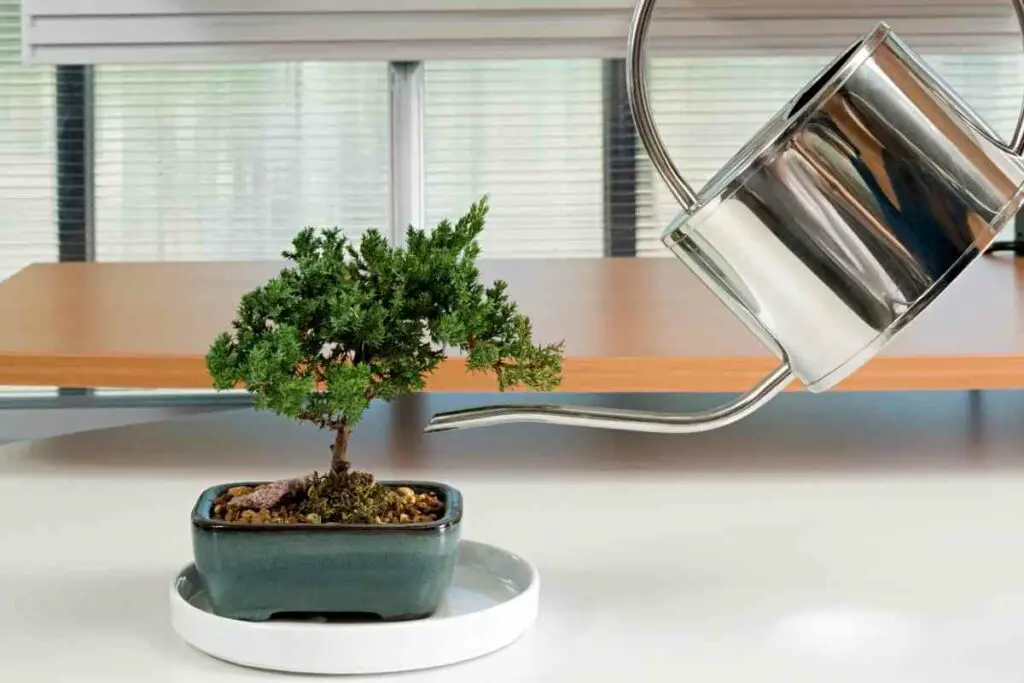
Most people recommend that you water it at least once per week. However, some trees require that you water them more or less frequently.
When you water the tree, carefully submerge it in water, all the way up to the base of the trunk. You’ll notice bubbles emerging from the soil.
Have You Noticed? If it looks like the water’s boiling, you didn’t water the tree enough during the week! More bubbles mean the soil was drier.
Keep the tree submerged until the bubbles stop. Then, let it drain completely before putting the tree back.
6. Pruning and Shaping
Prune the tree as it grows allows you to style and make it into unique shapes.
You can prune an indoor bonsai year-round, but you should only prune an outdoor bonsai between March and September.
Using bonsai shears (not regular scissors!), prune back the branches that escape the shape you want the tree to take.
These trees grow slowly, so you’ll want to have a form in mind way in advance.
There are so many different shapes that you can choose from. Most people remove branches that appear at the same height to balance the tree.
However, you can shape your bonsai how you want to! This art form allows for plenty of creative expressions.
Key Takeaway – You’ll want to ensure you don’t hurt the tree during pruning. You want to make cuts that heal smoothly, so your tree doesn’t appear damaged. It’s also for the best that you prune branches that cross with each other.
In Case You Missed It
- How to Dry Basil Leaves: A Professional Guide
- Is an Avocado a Fruit or Vegetable? Simple Answer and Explanation
- Does Pineapple Have Seeds? Exploring the Anatomy of Pineapples
- Blooming Through Winter: Can I Grow Vegetables Indoors in the Winter?
- What Can You Grow in a Greenhouse All Year Round: A Guide to Year-Round Greenhouse Gardening
- Are Blueberries Blue? Debunking the Myth of Their Color
















